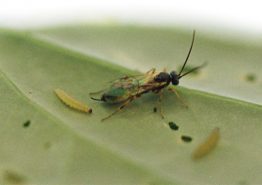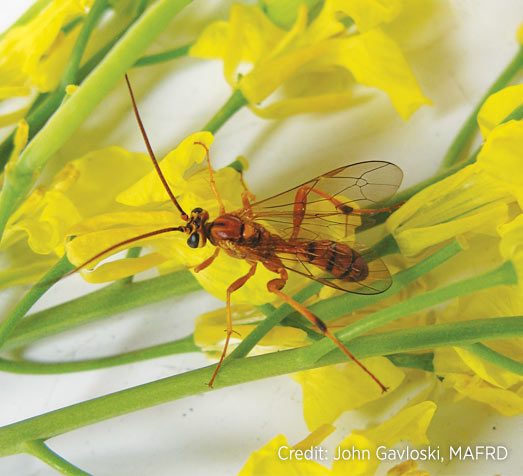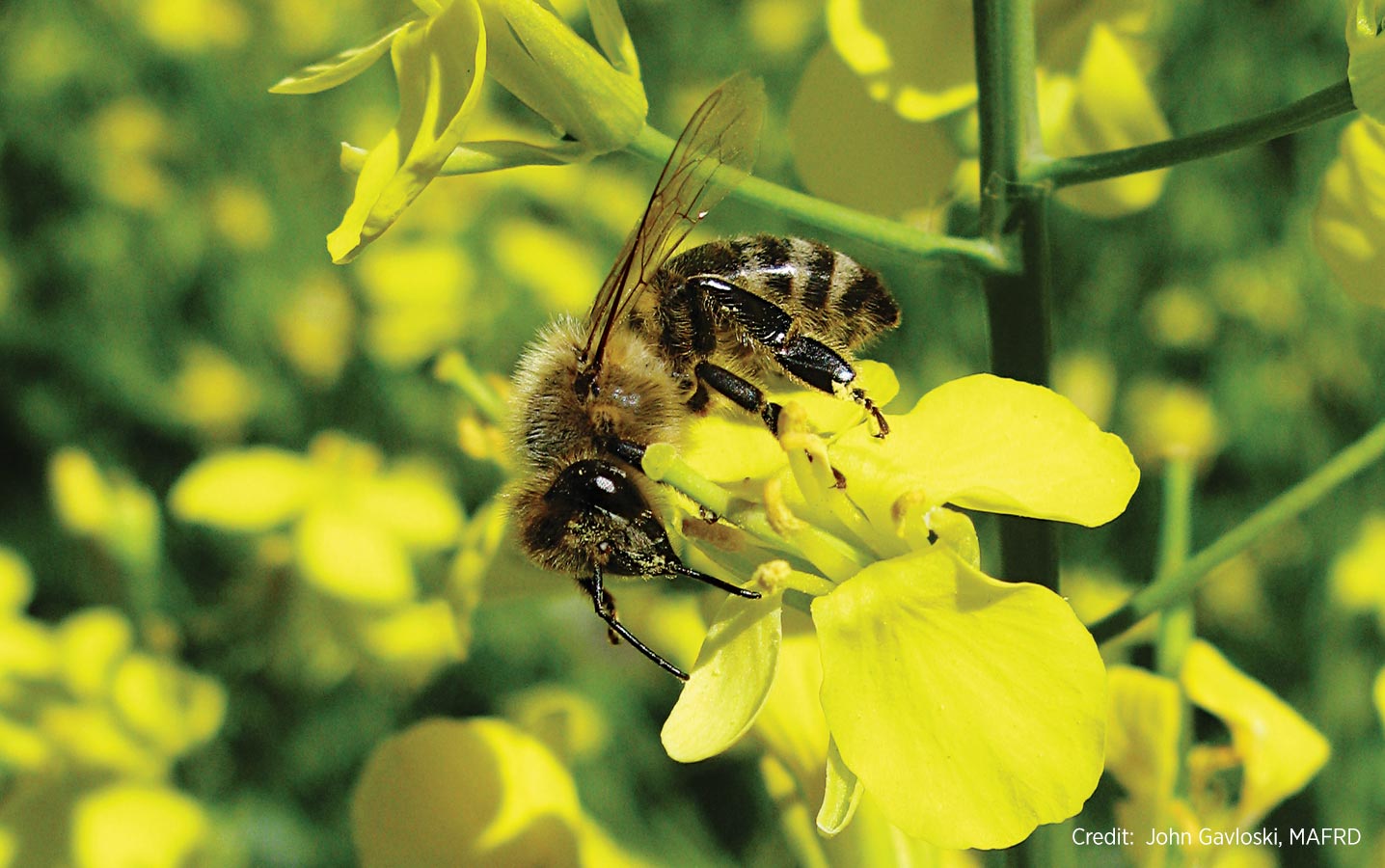Take care of beneficial insects
Key practice: Use insecticides judiciously and employ strategies that may increase populations of some beneficial insects and reduce mortality of some parasitoids. These strategies include reducing tillage, leaving tall stubble to improve overwinter survival and intercropping.
Key research: Dosdall, Lloyd, University of Alberta. “Improved Integrated Crop Management with Beneficial Insects.” Canola Digest
Science Edition (2013).
Dosdall, Lloyd, University of Alberta. “Determining Athropod Biodiversity in Canola Cropping Systems as a Key to Enhancing Sustainability of Production.” Canola Digest Science Edition (2013).
Beneficial insects provide valuable contributions to canola production, both in terms of pollination of crops and predation of insect pests. Monitoring populations of both pest insects and parasitoids can help canola producers make decisions about the need for insecticide applications.
Canola growers should also employ strategies that may increase populations of some beneficial insects and reduce mortality of some parasitoids. These include limited spraying during flowering to protect bees and other pollinators, and reducing tillage, leaving tall stubble to improve overwinter survival, intercropping and even leaving late-emerging weeds in canola to bolster dominant predator counts.
Lloyd Dosdall of the University of Alberta led two recent projects focused on beneficial insects (both were summarized in the Canola Digest Science Edition, 2013).
“Determining Arthropod Biodiversity in Canola Cropping Systems as a Key to Enhancing Sustainability of Production” provides a starting point towards filling the gaps that exist in our understanding of potentially beneficial insects at work in our fields. This includes development of a new database of insect biodiversity in canola fields in Alberta.
Dosdall found that weeds in a field increased insect biodiversity. For this reason, sequential herbicide applications to control late-emerging weeds should be avoided. The negative effect of these weeds on crop yield may be minimal, and the study indicates that small weedy backgrounds have the potential to enhance arthropod biodiversity, especially of predatory ground beetles.
“Improved Integrated Crop Management with Beneficial Insects” was a three-year study led by Dosdall and Owen Olfert, Julie Soroka and Neil Harker of Agriculture and Agri-Food Canada (AAFC). This study focused on the parasitoids that help keep diamondback moth populations regulated. Diadegma insulare is known to sometimes completely terminate diamondback moth outbreaks in Western Canada. Microplitis plutellae and Diadromus subtilicornis also attack diamondback moth, sometimes inflicting high levels of parasitism. The aim of this project was to develop forecasting strategies to predict abundance levels and distributions for these three parasitoids.

Field surveys identified three other parasitoids of diamondback moth, including the discovery of an unknown species of braconid believed to be Costesia vestalis. This species appears responsible for a substantial level of the total parasitism of diamondback moth.
The most efficient approach to monitoring canola for diamondback moth and its parasitoid fauna is to take sweep net samples from several locations in each production field.
This study shows parasitism of diamondback moth larvae and pupae can be relatively high early in the season. Producers are encouraged to carefully monitor pest and natural enemy populations to ensure insecticide applications are necessary.






